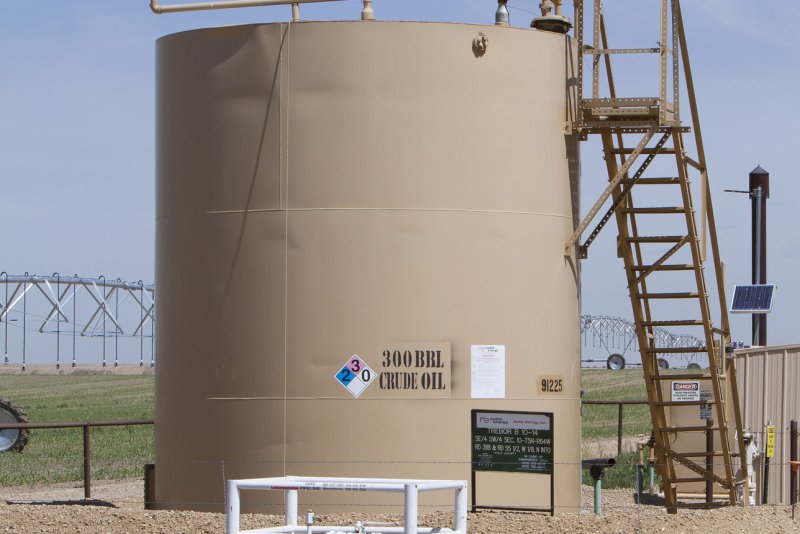Large stock builds over the last few years may have inflated a five-year metric that analysts and traders are using to gauge oil market balance. File photo by Gary C. Caskey/UPI |
License Photo
Feb. 23 (UPI) -- Even though U.S. crude oil inventory levels indicate a substantial drawdown of a surplus, the data may be covering a wider gap, analysis finds.
The U.S. Energy Information Administration reported U.S. crude oil inventories declined 1.6 million barrels last week.
Analysts and traders are watching inventories for signs of balance as an oversupplied market in part helped drag the price of crude oil to historic lows, below $30 per barrel, two years ago. Crude oil prices as recently as September 2014 were above $100 per barrel for Brent, the global benchmark for the price of oil that now stands at around $65 per barrel.
The Organization of Petroleum Exporting Countries, with help from non-member states, is in its second year of a coordinated effort to drain the surplus from the five-year average in oil inventories of the world's leading economies with coordinated production cuts. For the United States, inventories are drawing down because of higher exports and fewer imports.
For the previous week, total U.S. oil production averaged 10.2 million barrels per day. Exports, meanwhile, topped 2 million bpd and the four-week moving average is nearly twice as much as what it was last year.
Total U.S. crude oil imports, meanwhile, averaged about 7 million barrels per day and the four-week moving average is down about 7 percent from last year.
Crude oil stockpiles in the United States swelled over the last few weeks, which is typical for this time of year because demand is usually lower in the winter and some refineries are in a maintenance period. Nevertheless, analysis from S&P Global Platts found U.S. inventory levels are 1.4 percent above the five-year average, compared with a 38.7 surplus at this time last year.
"But that comparison is skewed by large builds in crude stocks that took place from 2015 until last year which, in turn, raised the baseline," its analysis read.
An OPEC committee monitoring the production cut policy said this week that compliance was over 100 percent. The overall effort, however, is supported by some producers doing more than necessary. Venezuela, meanwhile, is producing far less than its historical average because of a combination of geopolitical and internal pressures, not because of OPEC policies.
Platts said that, while the U.S. inventory is by this week close to the five-year average, it's still 7.4 percent above the level from 2015 and 27 percent above 2014.
"Closing those gaps will require a significant reduction in stock levels similar to last year," its emailed analysis read.















